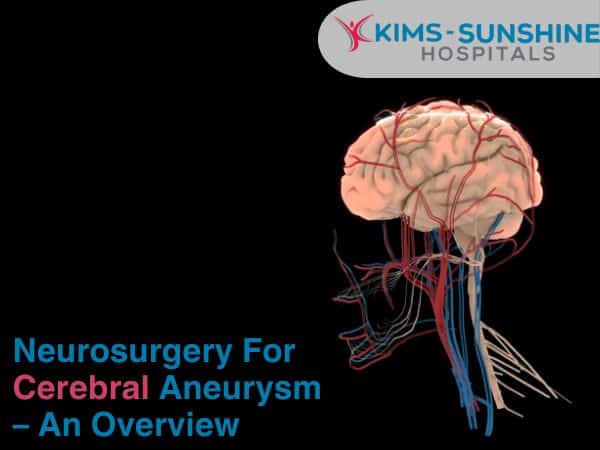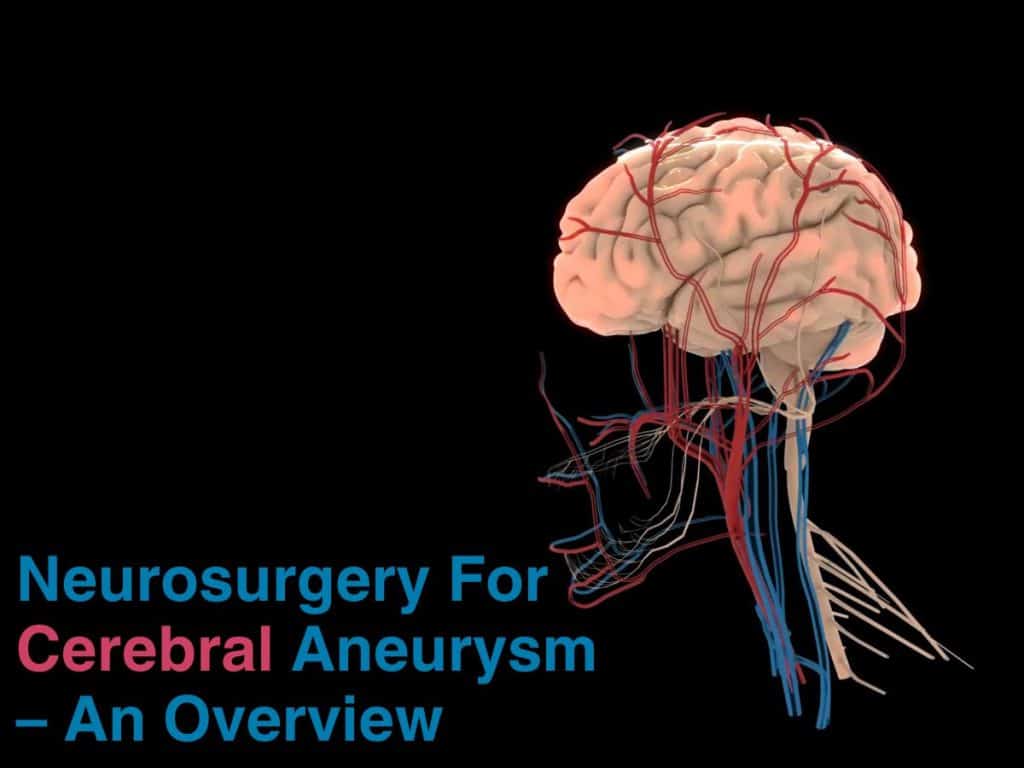
Neurosurgery for Cerebral Aneurysm – An Overview
 Headaches are very common, aren’t they? A skipped meal, a long day, or even an argument is enough to trigger one. In fact, every time we have a headache, we either sleep it out, or pop a pill thinking that it is just a matter of time before it vanishes.
Headaches are very common, aren’t they? A skipped meal, a long day, or even an argument is enough to trigger one. In fact, every time we have a headache, we either sleep it out, or pop a pill thinking that it is just a matter of time before it vanishes.
However, not all headaches are like that. Sometimes, your nagging headache might be hiding something nasty.
Like an aneurysm.
An Aneurysm in simple words is dilation.
By definition, an aneurysm is the abnormal local dilation in the walls of a blood vessel which is a result or consequence of a disease, injury or disorder.
Cerebral aneurysm is basically an abnormal dilation in the walls of a blood vessel in the cerebral or the brain of a person.
Aneurysms can be true or false. False aneurysms are when a cavity is lined by a blood clot.
In many cases, cerebral aneurysms can leak or rupture causing symptoms such as severe headaches or stroke like symptoms and even in some cases, death.
Cerebral aneurysms are mainly diagnosed through CT Scans, MRI, Lumbar Puncture and Angiography. In many cases, it has been reported that cerebral aneurysm was diagnosed post the person’s death during an autopsy.
Explore the intricacies of neurosurgery for cerebral aneurysms in our comprehensive overview. Learn about treatment options, recovery, and essential insights to empower informed decisions on this critical aspect of neurological health.
The Causes of Cerebral
Aneurysms have a number of causes. They can be internal as well as external in nature. Most causes which are external in nature include:
- High blood pressure
- Anti Sclerosis
- Hereditary
- Abnormal blood flow
- Some of the external causes include:
- Trauma
- Drug abuse
All or most of these causes artery walls in inflam and eventually weaken.
These causes, eventually lead to the symptoms of aneurysm.
Some of the symptoms of an aneurysm are:
- Headache
- Numbness to one side of the face
- Dilated Pupil
- Change or shift in vision.
Treatment for Cerebral Aneurysm:
The main aim for any kind of treatment for cerebral aneurysm is to repair the blood vessels which are damaged. There are mainly two methods which are most performed and preferred by neurosurgeons all over which have proven to be effective to treat this condition.
Clipping:
This process is mainly done by an expert neurosurgeon and includes operating on the brain by cutting open the skull. The next step in this method is to identify the damaged blood vessel and adding a clip across the aneurysm. This clip prevents the blood from entering the aneurysm and causing further growth and also blood leakage.
Coiling:
In this method of treatment, an interventional radiologist or neurologist and even a neurosurgeon threads a tube through the arteries. Once done, they identify the aneurysm with an angiogram and fill the aneurysm with coils of platinum wire or with latex. This method of coiling prevents blood from entering the aneurysm and treats the patient from the continuous effects of the disease.
Both these methods or treatments fall under Neurosurgery for treating cerebral aneurysm. Even though these methods have been done many times and preferred as well, along with its benefits there are also a few disadvantages of the treatments.
Some of the disadvantages of these procedures are:
- Risk of damaging surrounding blood vessels and cause extensive bleeding.
- Possible damage of nearby brain tissue.
- Cause of surrounding blood vessels to go into spasm.
- Depriving the brain tissue of blood supply.
- Possible cause of stroke.
Post the surgery, detailed attention is paid to the brain of the patient and also the surrounding blood vessels to prevent further damage. Medications in prescribed dosages are given to the patient to control high blood pressure, prevent blood vessel spasm, agitation, seizures and ultimately stroke.
Since these two procedures are highly delicate in nature, it is necessary to consult experts in neurosurgery before getting through with the surgery. Until and unless suggested by reputed and expert neurosurgeons from a reputed hospital, these surgeries should not be performed.
About Sunshine Hospitals
A Multi-Super Speciality Institution, 500+ bedded Sunshine Hospitals (Begumpet) is promoted by globally reputed Joint Replacement Surgeon Dr. AV Gurava Reddy (Orthopedic Doctor) and like-minded associates who share the objective of making world-standard healthcare available, affordable and accessible to the common man.
At KIMS-Sunshine Hospitals, acclaimed as the Best Neurology Hospital in Hyderabad, our team of Top Neurosurgeons In Hyderabad specialize in comprehensive care for cerebral aneurysms. Explore an insightful overview of neurosurgery’s advancements and holistic treatments by our expert team.






